Pumping station C. Mantel and the Schermerboezem

In 2017, the C. Mantel pumping station was commissioned, named after former high water board member Cees Mantel. It drains the Schermerboezem, an extensive water system from Den Helder to Zaanstad and from Alkmaar to the Markermeer. Dozens of polders depend on this polder for the supply and discharge of water.
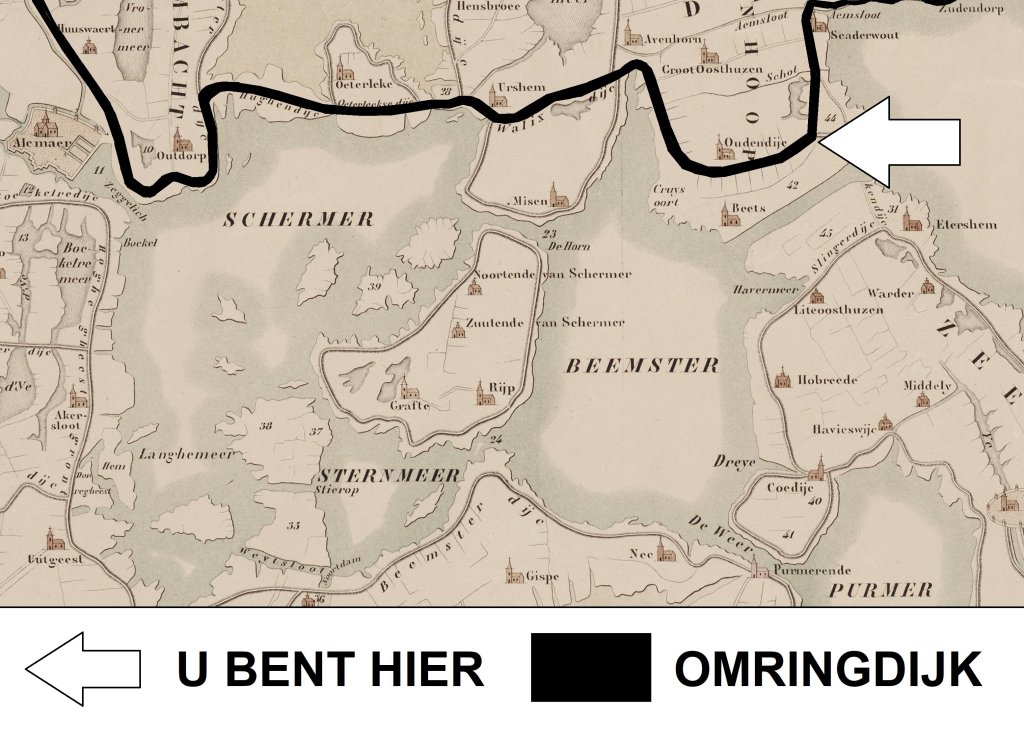
Until the seventeenth century, the Schermerboezem consisted of large lakes, including the Beemster and the Schermeer. Excess polder water was discharged into these lakes. In the Golden Age the lakes were drained. The land reclamation was offset by an impressive reduction of the storage basin. An enormous amount of space for water was lost.
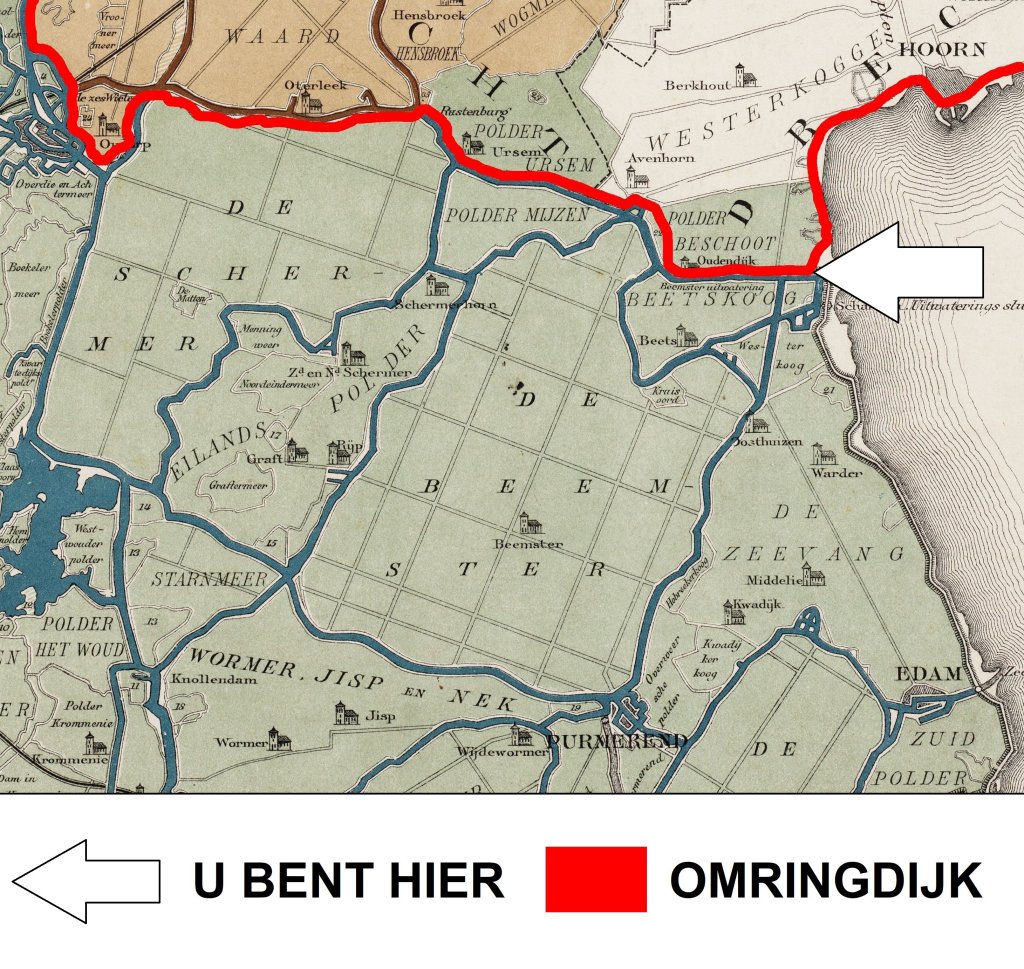
The Schermerboezem thus changed from an extensive water storage area into a network of canals and ring ditches. All excess water has since been retained and drained there. The capacity is limited. From time to time water has to be drained out. Locks at the edge of the storage basin were used for that purpose.
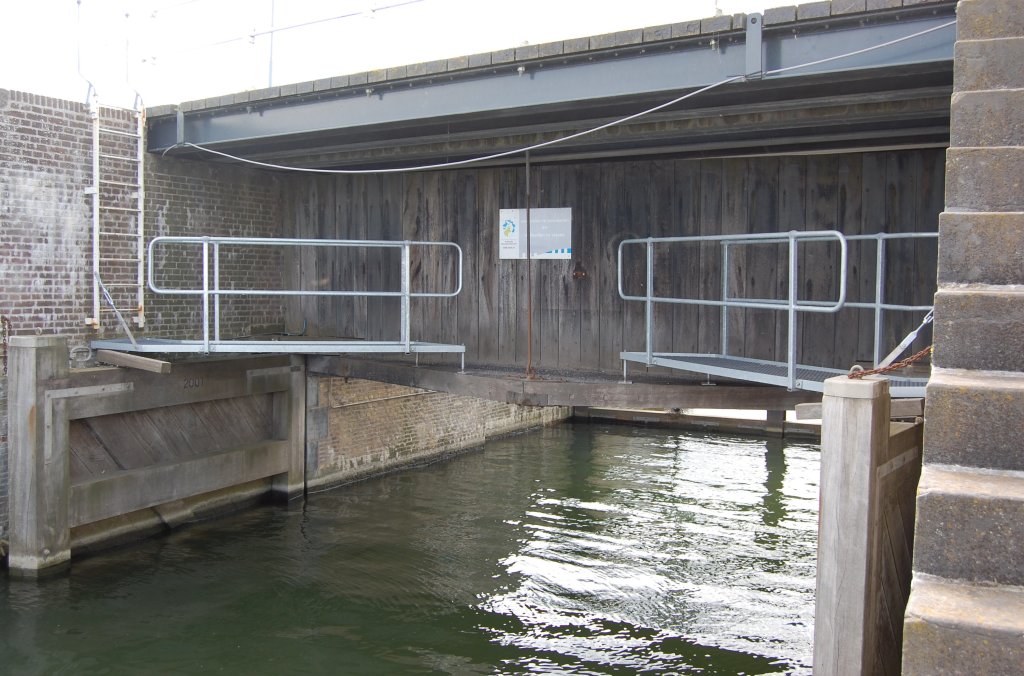
Three such locks are found just south of the Omringdijk in the village of Schardam. One is around the corner from the dike. This lock, the Hornsluis, was built in 1735 by the Beemster polder administration. It forms the outlet of a canal to which the Beemsterringvaart connects.

There are two memorial stones attached to the Hornsluis lock wall. One of them, shown here, commemorates the laying of the first stone under the Beemster coat of arms: 'the new stone sluice was laid according to the resolution of the Lords of the Beemster estates of October 16, 1734, under the direction of the Lords of the Dykgraaf and the high district councils, and the first stones were laid by Jacob Alewyn and Jan Pet Olpherts on July 6, 1735. Jacob Alewijn was the son of the dykgraaf.
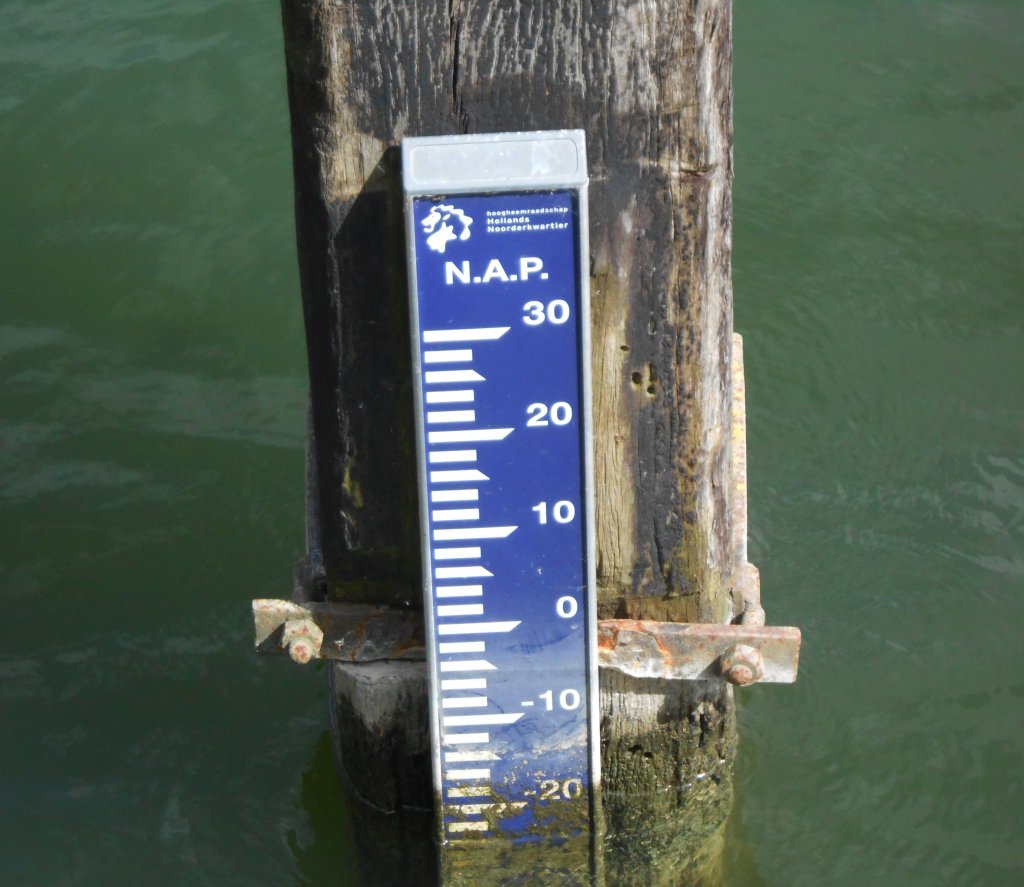
For a long time, the locks were the only way out to keep the Schermerboezem level. Only in the 1960s and 1970s two pumping stations were put into operation: in Den Helder and Zaandam. For drainage on the Markermeer one remained dependent on the locks. Of course, drainage via a lock is only possible if the inland water is higher than the outside water. When the Markermeer was still the Zuiderzee, drainage was good at low tide. With the closing off of the sea in 1932, sluicing became more difficult. This is because the IJsselmeer and Markermeer lakes have a fixed level, which is often higher than that of the storage basin.
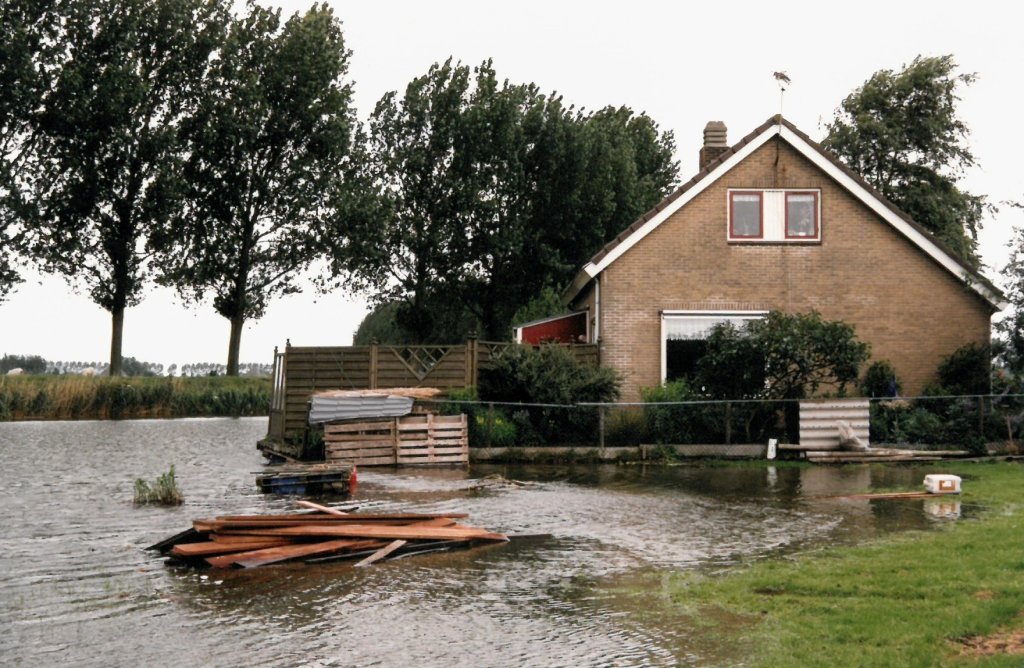
Due to the limited drainage possibilities on the Markermeer, the water level in the storage basin often rose high - too high in September 1994. So much rain fell that the polders had to discharge more water than the storage basin could handle. The level in the ring ditches and canals rose to dangerous levels. Houses on the banks were flooded (photo) and in some places the water even overflowed the dikes. A grinding ban had to be declared, which meant that no polder pumping station was allowed to pump water into the storage basin.
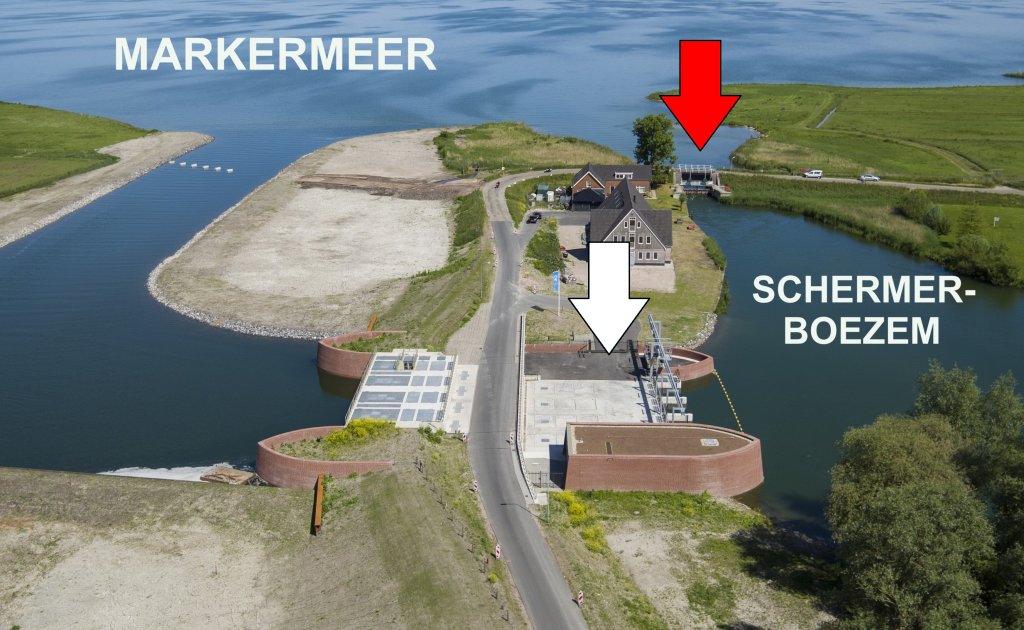
It was clear: for better water level control, the drainage to the Markermeer had to be improved. With the arrival of the C. Mantel pumping station (white arrow), the Water Board is no longer dependent on the old locks. The four electrically driven pumps grind up the water with ease. The pumping station can handle as much as 2,000 cubic meters of water per minute. That is equal to the contents of five to six single-family homes. This aerial photo shows the Hornsluis (red arrow) in addition to the pumping station.
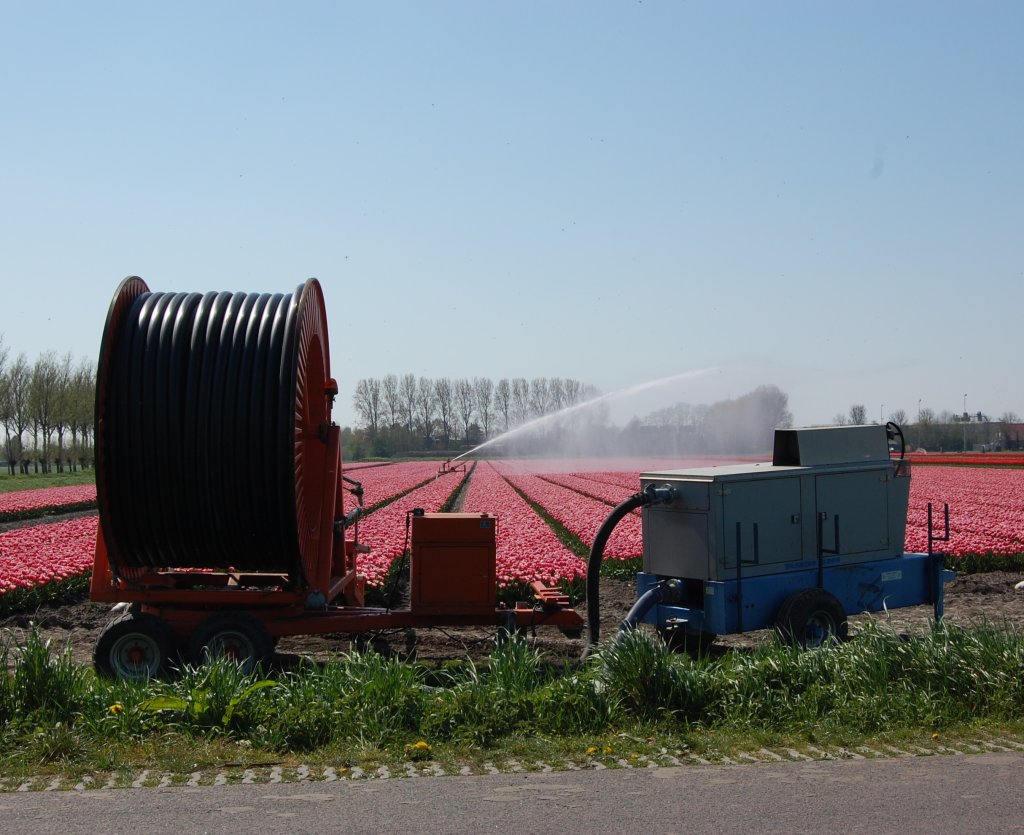
The pumping station not only stores storage water, but can also grind additional water from the Markermeer into the storage basin. No superfluous luxury, because dry springs and summers like those of 2003 and 2018 will be more common in the future.
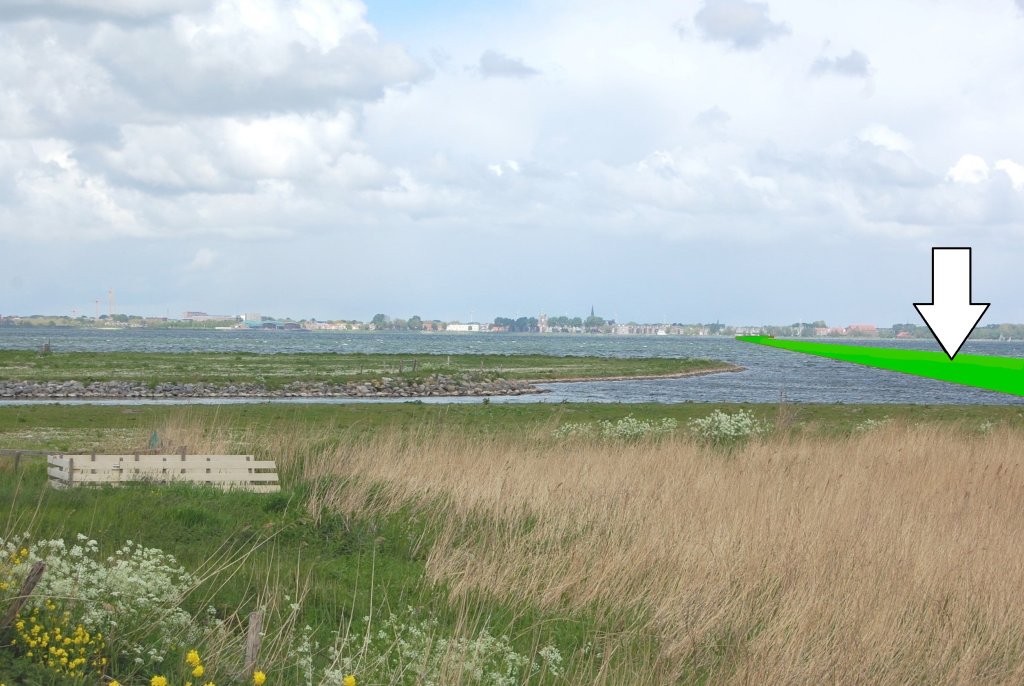
What is striking about this spot is that the dike does not run north to south, but west to east. Also striking is the grassland outside the dike, through which runs the pumping station's supply and drainage channel. These are indications of the old alignment of the Omringdijk. Look toward Hoorn and imagine a dike running straight toward the city (see the arrow in the photo). This was the situation until 1375, when storm surge damaged this dike so much that people had to build a new one inland on the route of the current north-south dike.
- Next: Walingsdike
- Previous: Breakthrough at Scharwoude